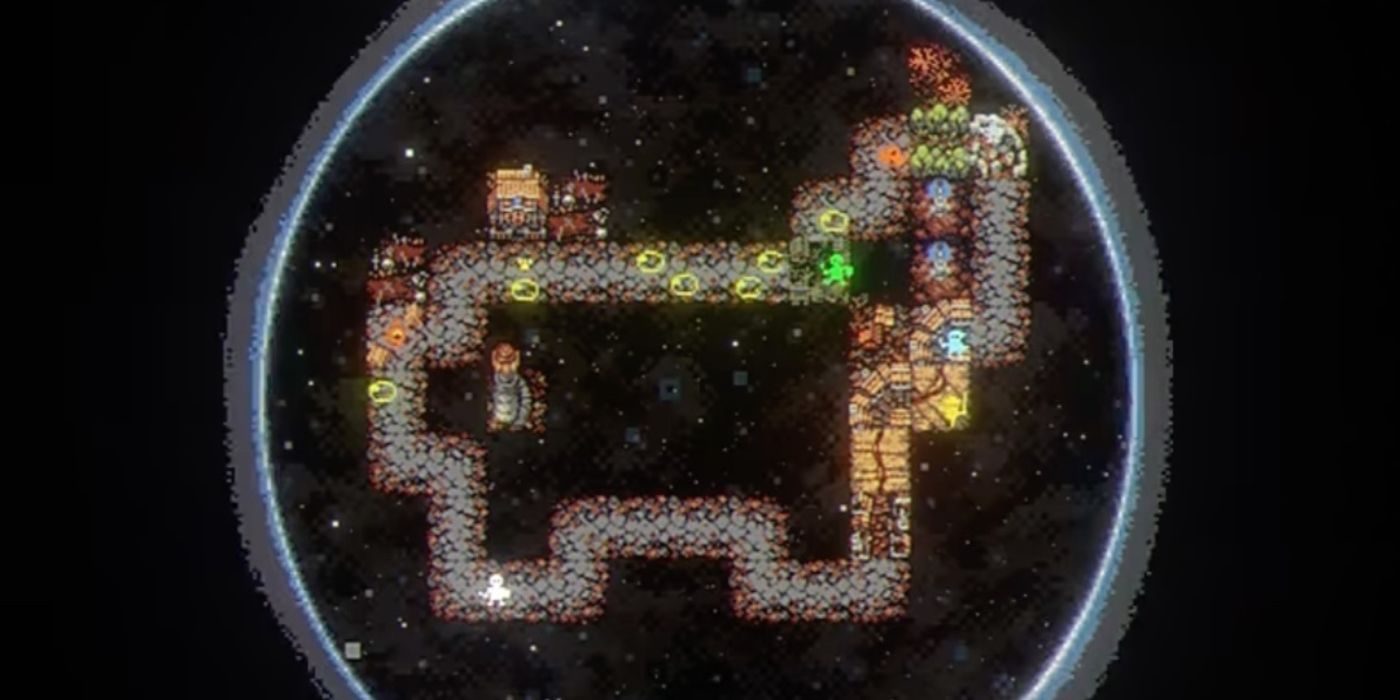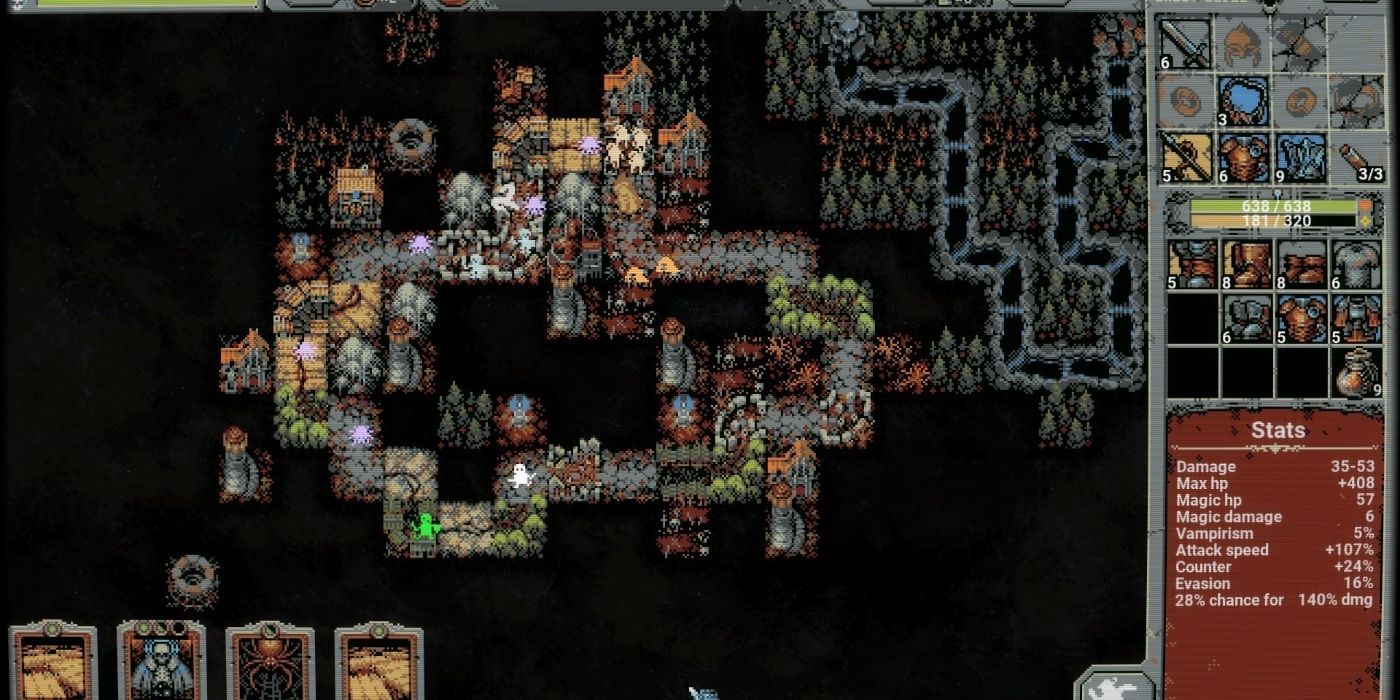The unique spin that Loop Hero brings to the roguelike genre is the concept of having the player build the challenge themselves with randomly-generated cards. This brings an element of deck-building to the table, as players must choose which types of cards will be available to "draw" during an expedition. There are many cards to unlock and only a select few can be placed in the deck at one time, so this poses the question of which cards are the best in Loop Hero.
When starting Loop Hero for the first time, only a few cards are initially available. Some of the beginner cards are valuable and will continue to be useful for many hours of playtime. However, long-term success in Loop Hero depends on upgrading the campsite hub and getting access to new cards. Below is an explanation of some of the best cards and how to obtain and use them.
Landscape Cards
Mountain and Meadow cards are part of the initial kit when starting fresh in Loop Hero, but these landscapes will continue to necessary in the long run. To make the most of these, players should arrange Mountain cards in a 3x3 formation to create a Mountain Peak that boosts HP by an even greater amount. Meadows should be placed next to other structures or a Mountain to become a Blooming Meadow that restores more HP each day. Compared to the Mountain, Rock cards are less effective and can even be discarded if the player wants to stave off a boss encounter.
Sand dunes are unlocked by building an Intel center, and each of these cards placed during an expedition reduces the HP of enemy creatures by 1%. The Forest card is of course unlocked by building a Forest at the campsite, and it will add +1% to the hero's attack speed. This effect becomes noticeably useful as more Forests are placed, and only more so if a River is placed next to the forest to double the effect. Players should be careful about using a River next to a Desert or Sand dunes, however, as this yields an Oasis that lowers the attack speed of the hero as well as monsters.
Road and Roadside Cards
Nothing is more relieving than drawing a Village card. After constructing a Gymnasium at camp, players can use the Village during expeditions as a safe haven of sorts, where few monsters spawn and HP can be restored. It also opens the door for quests, which are important for quickly gaining experience points and obtaining game-changing traits for the remainder of the run. The Vampire mansion is available from the beginning and offers the chance to get powerful gear for a hero capable of defeating fearsome vampire enemies. The Vampire Mansion can be paired with a Village, which removes its status as a sanctuary for several loops but later becomes an even greater source for experience and health.
The Blood grove can make a huge difference after unlocking it via the Field kitchen. It can only be placed next to a Grove card, but it causes any enemy to immediately die when it reaches 15% health. With clever placement, this effect can even be used against bosses. And after defeating the first boss, players will also have access to the Chrono crystals card, which doubles the effectiveness of adjacent cards with a daily trigger. This could mean getting twice the healing from Meadow cards, which is not to be underestimated.
Golden Cards
Special Golden cards become available after building the Intel Center. These cards possess once-per-run effects that can really change the way an expedition unfolds, but they always have positive and negative outcomes that must be weighed carefully. Even so, one particularly useful Golden card that should be used is the Arsenal. After placing this card, a new equipment slot becomes available for the hero. Subsequent gear drops will have lower stats overall though, so the timing of when to play this card is important.
Loop Hero is available now on PC.


